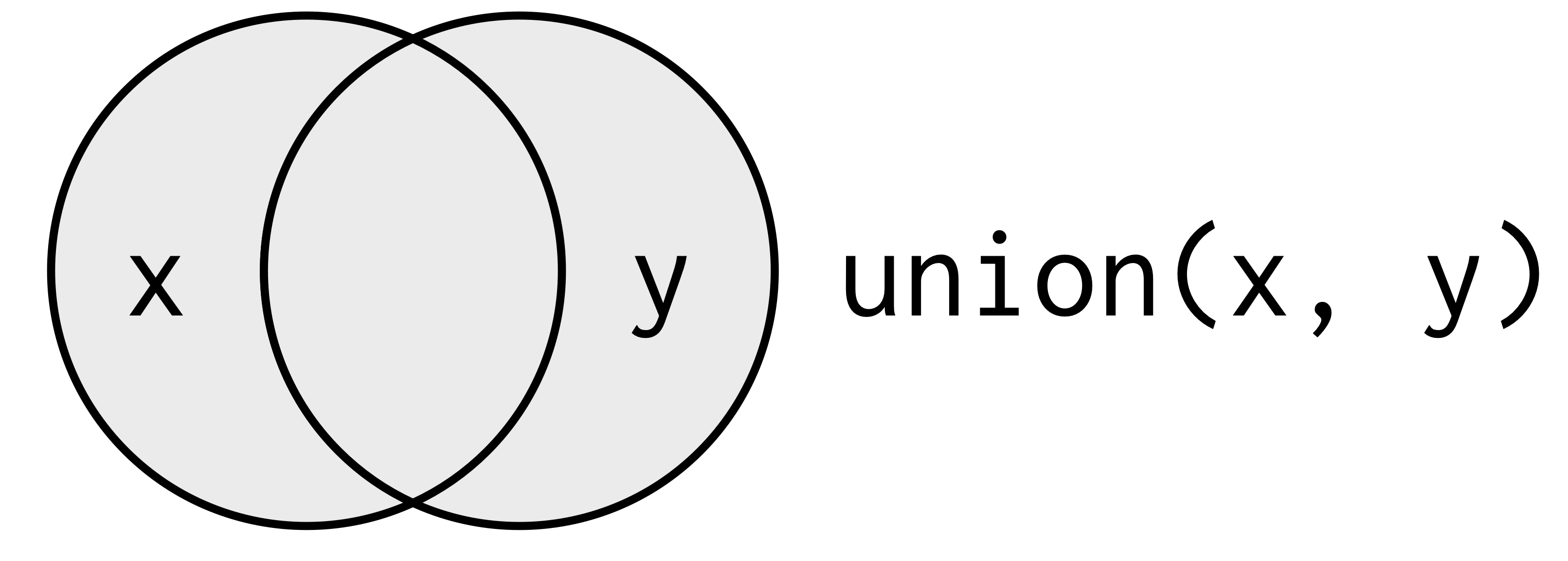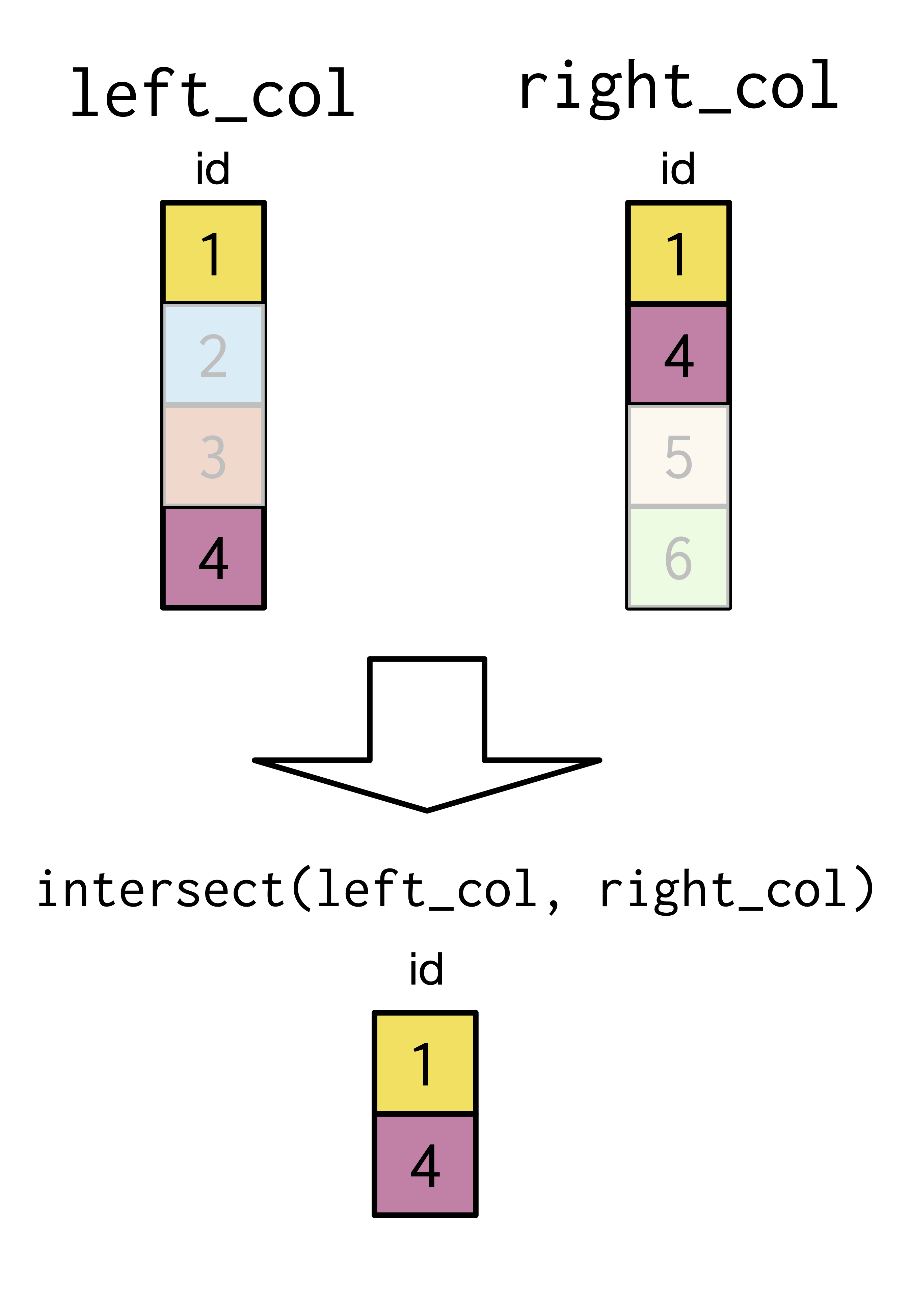Lines that intersect are without parallel
Programming with dplyr

Dr. Chester Ismay
Educator, Data Scientist, and R/Python Consultant
Set theory clauses
Compare and combine data from two sources
dplyrhas several functions to perform set theory clauses on tibbles
Venn diagrams for set theory




intersect diagram

Uruguay tibbles
uruguay_imf
# A tibble: 9 x 4
iso country year consumer_price_index
<chr> <chr> <int> <dbl>
1 URY Uruguay 2011 105.
2 URY Uruguay 2012 114.
3 URY Uruguay 2013 123.
4 URY Uruguay 2014 134.
5 URY Uruguay 2015 146.
6 URY Uruguay 2016 160.
7 URY Uruguay 2017 170.
8 URY Uruguay 2018 183.
9 URY Uruguay 2019 197.
uruguay_wb
# A tibble: 4 x 4
iso country year perc_rural_pop
<chr> <chr> <dbl> <dbl>
1 URY Uruguay 2013 5.16
2 URY Uruguay 2014 5.06
3 URY Uruguay 2015 4.96
4 URY Uruguay 2016 4.86
Trying out intersect()
intersect(uruguay_imf, uruguay_wb)
Error: not compatible:
not compatible:
- Cols in y but not x: `perc_rural_pop`.
- Cols in x but not y: `consumer_price_index`.
intersect(uruguay_imf$year, uruguay_wb$year)
[1] 2013 2014 2015 2016
Difference between intersect() and a join
intersect()looks for rows in commoninner_join()looks for individual key entries matching
This is an important distinction.
Let's practice!
Programming with dplyr

